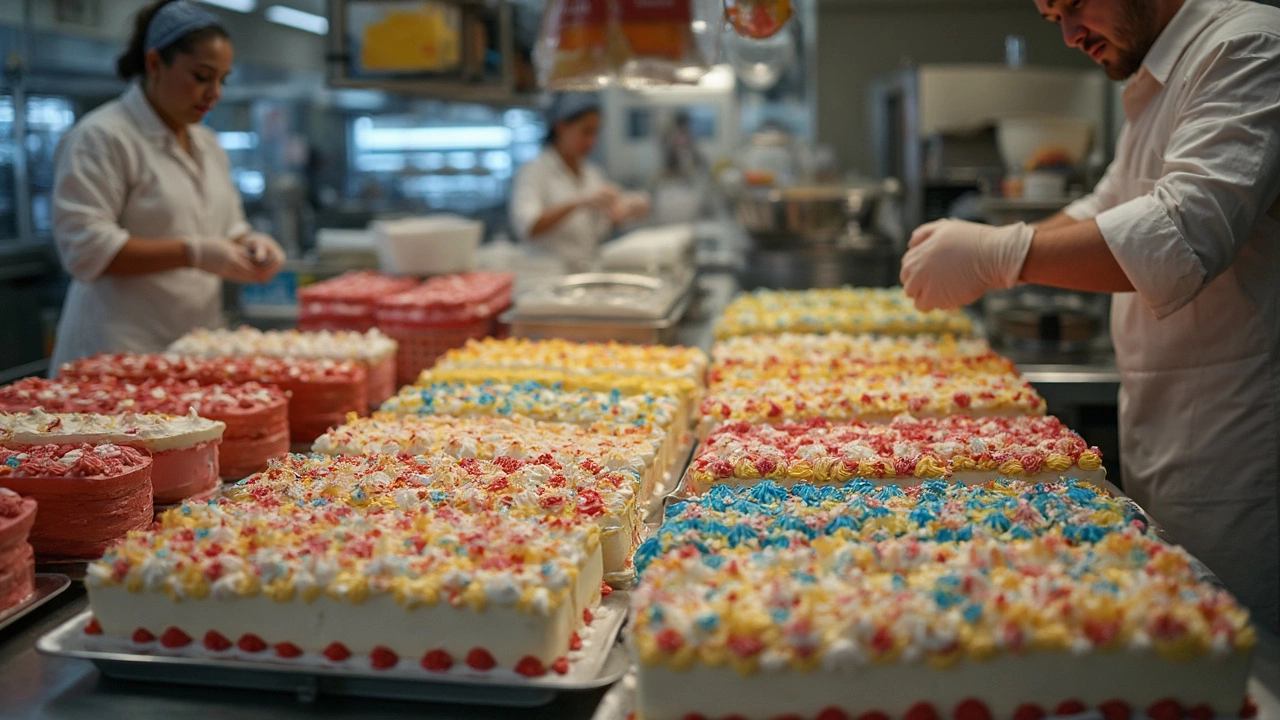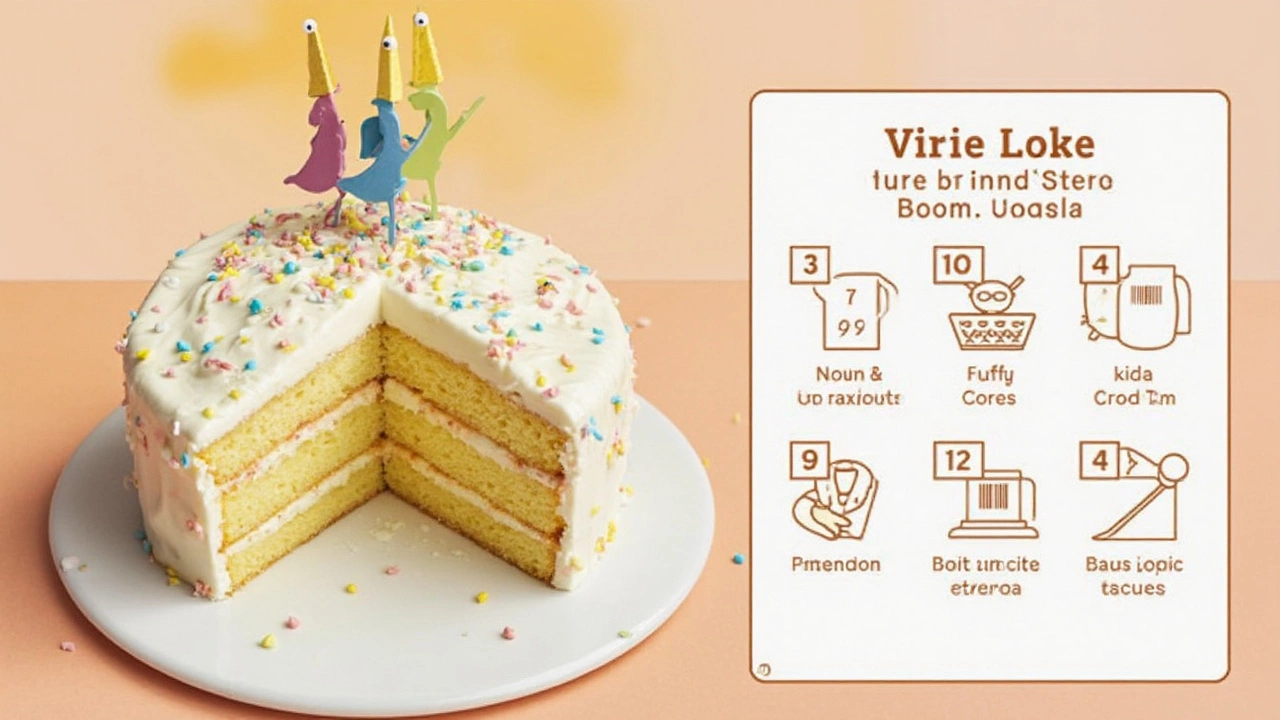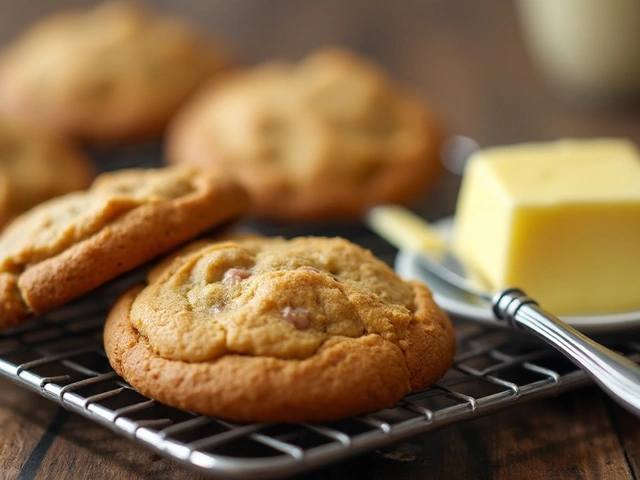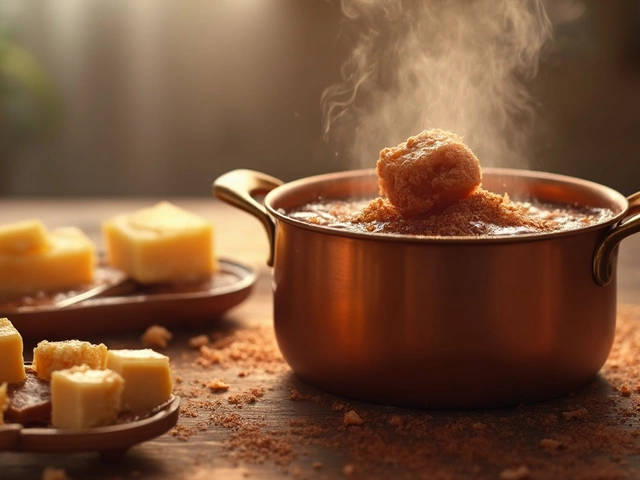
Ever checked out the bakery section and wondered how those big, bright birthday cakes can be so cheap? You're not alone. It’s no secret that grabbing a sheet cake from your local grocery store costs way less than ordering from a boutique bakery. So, what’s the catch?
The magic (or trick, depending on how you see it) is all about scale and shortcuts. Grocery stores bake hundreds—even thousands—of cakes each week. They buy their ingredients in bulk, often directly from giant suppliers, which cuts the cost of things like flour, sugar, and shortening. That buying power brings down prices for them, and in turn, for you.
- How Grocery Stores Cut Cake Costs
- What’s Actually in That Frosting?
- The Secret Life of Mass-Produced Cakes
- Tips for Picking (or Passing on) Store-Bought Cakes
How Grocery Stores Cut Cake Costs
Let’s get real—grocery stores aren’t just being generous when they slap that low price tag on a birthday cake. They’ve mastered the art of shaving down expenses without most shoppers noticing. Here’s the nitty-gritty.
First off, bulk buying is their superpower. Stores order ingredients like flour, sugar, and oil in massive amounts, not those cute bags you grab at home. That means a lower price per pound, sometimes half of what a small bakery pays. Plus, they often score discounts from wholesalers for repeat orders.
Next, many cakes start their journey far from the store. Most grocery chains get frozen, pre-baked cake layers shipped in from “cake factories.” These layers hang out in storage until someone orders a cake. That’s a whole lot cheaper than baking from scratch in-house every single day.
Labor costs don’t get out of control either. A lot of the decoration work is basic and done ultra-fast by trained staff—you won’t see slow, hand-piped flowers like at a fancy boutique bakery. Instead, they use stencils, pre-made decorations, and easy-to-reproduce designs. This cranks out cakes in minutes, not hours.
Automation helps, too. When you crank out hundreds of identical cakes, you can use machines for mixing, baking, and even decorating. It’s fast and keeps mistakes (and waste) minimal.
- Bulk ingredient buying cuts costs by up to 40%
- Pre-baked cake bases reduce labor costs
- Simpler decoration saves time and money
- Automation speeds up production and reduces waste
Check out how the numbers stack up:
| Cost Area | Small Bakery | Grocery Store |
|---|---|---|
| Flour (per lb) | $0.60 | $0.25 |
| Hourly Wage | $15+ | $8–$10 |
| Cake Base | Baked-to-order | Frozen/pre-made |
| Decoration Time | 45 min | 10 min |
The bottom line? Grocery stores use every trick in the book to keep that grocery store cakes price tag way lower than your neighborhood bakery.
What’s Actually in That Frosting?
This is where grocery store cakes stand out from fancy bakeries—it’s all about the frosting. Ever noticed how those bright, fluffy toppings just don’t taste like homemade buttercream? That’s because they’re not. Most grocery store bakeries use what’s called “whipped topping” or “buttercream-style” frosting, and neither is what grandma used to make.
The secret mix is usually a blend of powdered sugar, cheap vegetable shortening, water, and artificial flavoring. Real butter rarely makes an appearance, which means the frosting stays super stable—it won’t melt at room temp or deflate after a few hours. That saves labor and keeps cakes display-ready for longer. And if you’re allergic to dairy or trying to avoid animal products, this setup works in your favor.
But there’s a trade-off for that stability. These frostings tend to be much sweeter and a lot less rich than their homemade cousins. The ingredients list often includes things like:
- High-fructose corn syrup
- Palm or soybean oil
- Artificial flavors and colors
- Preservatives to keep it shelf-stable
Check this table to see how a typical grocery store cake frosting stacks up to bakery buttercream:
| Ingredient | Grocery Store Cake | Bakery Buttercream |
|---|---|---|
| Fat Source | Vegetable shortening | Real butter |
| Sweetener | High-fructose corn syrup, powdered sugar | Powdered sugar |
| Flavoring | Artificial vanilla, others | Real vanilla, natural flavors |
| Colors | Artificial dyes | Natural/none (usually) |
| Preservatives | Often included | Rarely included |
This is why grocery store cakes hold up so well at kids’ parties (especially outdoors or under bright lights)—they’re made to survive heat and humidity and still look photo-ready. If you’re someone who wants a less sugary taste or you have food sensitivities, don’t be shy about reading the label or asking the bakery for their ingredient list. Some stores now offer slightly more natural options, but those will usually cost a bit more.
If you want to boost the flavor at home, scrape off some of that mass-market frosting and add homemade whipped cream, cream cheese frosting, or just top with fresh fruit. It’s an easy way to give even a basic store cake a little glow-up without spending a fortune.

The Secret Life of Mass-Produced Cakes
Ever watched a grocery store’s bakery in action? It’s not like a cozy little cake shop. Most stores use pre-made, frozen cake bases that come packed from big food factories. These cakes are made way ahead of time and shipped in huge batches to hundreds of stores. It’s quick, it’s cheap, and it keeps those bakery cases full.
Here’s the secret sauce: the cake prep isn’t just done by skilled bakers. A lot of grocery stores hire staff with barely any baking experience because all they need to do is thaw, assemble, and decorate. The actual baking, with all the measuring, mixing, and oven-watching, happens at industrial plants far away.
The frosting and decorations? Also made in bulk. Buttercream is usually swapped out for a stable "whipped topping" or "decorator’s icing," which doesn’t melt or spoil quickly. This means cakes can sit out for days and still look fresh. Bright colors and shaped sugar decorations come pre-packed, ready for a fast slap-on to make every cake look festive with minimal effort.
Here’s what really allows grocery store cakes to stay so cheap:
- Frozen cake layers cut down on skilled labor and waste.
- Bulk purchases of mix, icing, and decorations reduce total costs.
- Standardized designs keep decoration super-fast.
- Cakes are made to last longer on display, so fewer get tossed out.
Check out this real-world look at production numbers and time savings:
| Factor | Grocery Store Cakes | Small Bakery Cakes |
|---|---|---|
| Average Daily Output | Over 100 cakes per store | 5–20 cakes per shop |
| Baking Location | Central facility or factory | On-site, from scratch |
| Decoration Time | 10–15 min per cake | 1–2 hours per cake |
| Typical Shelf Life | 5–7 days | 2–3 days |
Everything in this system is meant to push out a lot of cakes, as fast and as cheaply as possible. If you need last-minute birthday cakes or you're just not picky, the setup totally works in your favor. But understanding what goes on behind the scenes helps explain why these cakes cost so little—and why they’ll never taste quite like something from a neighborhood bakery.
Tips for Picking (or Passing on) Store-Bought Cakes
Grabbing a cake at the grocery store is easy, but not every grocery store cake is worth the savings. Here’s how to get the best one for your next birthday—and a few signals that you might want to look elsewhere.
- Check the date: Freshness isn’t guaranteed just because it’s on display. Always glance at the sell-by or baked-on date. Cakes sit in refrigerated cases for days sometimes. If you can, ask a bakery staff member for a cake fresh from the back.
- Pick the right flavor: Not all flavors are created equal. Chocolate and vanilla classics tend to taste better, likely because stores go through these fastest and restock them more often. Exotic flavors might have been around for longer or just not hit the mark with the recipe.
- Look at the icing: Most stores use shelf-stable shortening-based icing. Cream cheese or whipped cream frostings are less common. If you care about taste over looks, scrape off some icing and try it before buying (or just ask for a sample if you're bold).
- Go custom for special events: If you want a custom design or higher-end ingredients, place a special order a few days ahead. You’ll get a cake that stands out instead of a generic sheet with sprinkles and a balloon drawn on top.
For those who worry about allergens or want a cake for someone with dietary needs, most stores actually keep labels in the display or have ingredient lists available upon request. This is handy if you need nut-free, gluten-free, or eggless cakes—but selection is often really limited compared to specialty bakeries.
| Feature | Grocery Store Cake | Bakery Cake |
|---|---|---|
| Average Cost (2025) | $18 (quarter sheet) | $40+ |
| Customization | Basic; often add-ons only | High; flavor, design, ingredients |
| Typical Shelf Life | 4-7 days | 2-3 days (fresher, no preservatives) |
| Ingredient Quality | Standard, processed | Often local, premium |
If you’re in a rush and on a budget, these cakes do the job. But for a really memorable birthday, consider splurging on a bakery creation—especially if food memories matter in your house. And a last tip? Dress up a store cake with some fresh berries, whipped cream, or birthday candles. No one has to know you didn’t bake it yourself.





